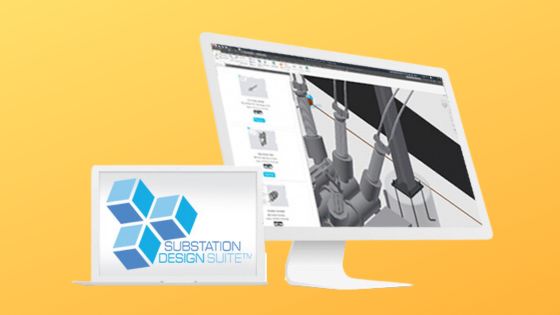In the world of electrical engineering and substation design, innovation is the driving force behind advancements that enhance efficiency, safety, and reliability. One such innovation that has been gaining momentum in recent years is 3D substation design. In this blog post, we’ll explore the advantages of 3D station design and how the Substation Design Suite is revolutionizing the way engineers approach substation projects.
The Power of 3D Station Design
Enhanced Visualization
One of the primary advantages of 3D station design is the ability to create highly detailed and accurate visual representations of substations. Traditional 2D drawings can be limiting when it comes to conveying the complex spatial relationships and equipment placement within a substation. With 3D station design, engineers and stakeholders can visualize the entire substation layout in three dimensions. This enhanced visualization aids in better understanding, decision-making, and troubleshooting during the design phase.
Improved Collaboration
Collaboration is key in substation design projects, involving multiple teams and stakeholders. 3D station design facilitates improved collaboration by providing a common platform for all parties involved. Engineers, architects, project managers, and clients can all access and interact with the 3D model, making it easier to share ideas, identify issues, and make informed decisions. This collaborative approach ultimately leads to more streamlined project workflows and reduced chances of errors.
Accurate Clash Detection
In a substation project, there are numerous components, such as transformers, circuit breakers, and control systems, which need to be carefully positioned to avoid clashes and interferences. 3D station design software, like the Substation Design Suite, incorporates advanced clash detection capabilities. This means that potential clashes between equipment can be identified and resolved early in the design phase, preventing costly rework and delays during construction.
Realistic Simulations
3D station design allows engineers to conduct realistic simulations and analyses of various scenarios. This includes evaluating the substation’s performance under different operational conditions, assessing the impact of environmental factors, and optimizing safety measures. These simulations provide valuable insights and allow for data-driven decisions, ultimately resulting in a more robust and reliable substation design.
Improved Safety
Safety is paramount in substation design and operation. 3D station design helps enhance safety by allowing engineers to identify potential safety hazards and design appropriate safety measures. It enables the creation of safety walkthroughs and visualizations, ensuring that safety protocols are in place before construction begins.
Embracing 3D station design with tools like the Substation Design Suite offers numerous advantages in the field of substation design. Enhanced visualization, improved collaboration, accurate clash detection, realistic simulations, and enhanced safety measures are just a few of the benefits that engineers can leverage to create more efficient, reliable, and cost-effective substations.
In an industry where precision and efficiency are crucial, adopting 3D station design is a step forward in the right direction. Engineers who harness the power of 3D station design are better equipped to meet the demands of modern substation projects, ensuring the continued supply of reliable electrical power to communities around the world.
So, if you’re looking to take your substation design projects to the next level, it’s time to embrace the third dimension and explore the advantages of 3D station design.




















